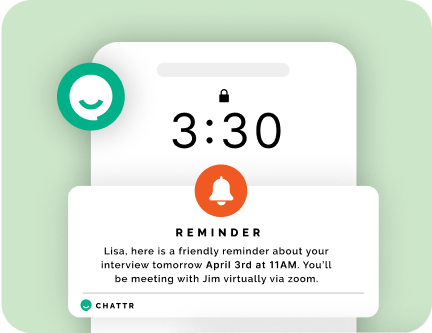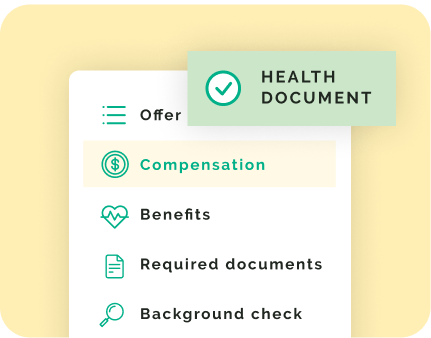Did you know how a job is designed can impact how well it is filled? Work design has come a long way in the past century, and today you can integrate many different elements into job descriptions to improve the hiring process. This article will discuss some of the most influential work design elements and takeaways that business owners and hiring managers can use in their hiring process.
What are the benefits of effective work design elements in job descriptions?
When it comes to job descriptions, effective work design elements are key to attracting top talent. After all, no one wants to apply for a job that sounds boring, difficult, or unfulfilling. By incorporating elements of good work design into your job descriptions, you can ensure that your postings will stand out from the rest and attract the best and brightest candidates. But what exactly are effective work design elements? Here are a few examples:
Autonomy: Employees who feel like they have a say in how they do their job are more engaged and productive. When writing your job description, be sure to include language that emphasizes autonomy and independence.
Challenge: A little healthy competition can go a long way regarding motivation. Be sure to include some challenges in your job description so potential candidates will know they will have an opportunity to learn and grow in their roles.
Creativity: If you want employees who can think outside the box, look for candidates who have demonstrated creativity in their previous roles. As you write your job description, include some questions that will help you gauge a candidate’s creativity levels.
How can you integrate these elements into your job descriptions to improve employee productivity and satisfaction?
As a hiring manager or business owner, you know that employee productivity and satisfaction are key to a successful business. But how can you ensure that your job descriptions effectively promote these goals? Integrating the following work design elements into your job descriptions can take your employees’ productivity and satisfaction to the next level.
First, clearly state the expectations for the role. What are the key deliverables? What results are expected? This will help set the tone for the entire job description and ensure everyone is on the same page.
Next, identify the skills and experience required for the role. This will help you attract candidates with the right expertise and eliminate those who are not a good fit.
Then, outline the duties and responsibilities of the role in detail. This will help employees understand exactly what is expected of them and avoid taking on tasks outside their scope. Finally, provide a timeline for each task or project, which will help employees stay on track and keep projects on schedule.
What are some best practices for doing so effectively?
When creating compelling job descriptions, there are a few best practices to keep in mind. First and foremost, your job description should be clear and concise. Hiring managers and business owners don’t have time to wade through lengthy, convoluted descriptions – they need to be able to quickly understand what the position entails and what kind of person would be a good fit. Second, your job description should be specific.
Include key responsibilities and duties and the qualifications and skills you’re looking for in a candidate. This will help to ensure that only qualified candidates apply for the position. Finally, make sure your job description is up-to-date. Regularly revise and update it as needed to reflect changes in the company or position. These simple best practices can create an effective job description to help you find the right candidate for the role.

Are there any potential challenges or drawbacks to consider when implementing these changes?
As with any change, there may be some potential challenges or drawbacks to consider when integrating effective work design elements into your job descriptions:
- You may need to invest time and resources to revise your existing job descriptions. This can be time-consuming, but it’s necessary to ensure that your postings are effective.
- You may need to train your hiring managers and HR staff on using these new job descriptions. This will help ensure a smooth transition and avoid confusion during the hiring process.
- You may need to adjust your budget to account for the time and resources required to create and implement these changes.
However, improved employee productivity and satisfaction benefits are well worth the investment.
How can you ensure that your employees take advantage of the new work design elements in their job descriptions?
There are a few things you can do to ensure that your employees are taking advantage of the new work design elements in their job descriptions:
- Make sure that your employees are aware of the changes. Inform them of the new expectations and requirements for their roles.
- Provide training and resources on how to use these new job descriptions effectively. This will help employees understand the changes and ensure they are using the new elements in their job descriptions to their best advantage.
- Be available to answer any questions or address any concerns that your employees may have.
These simple steps ensure that your employees can effectively use the new work design elements in their job descriptions.
What should you do if you encounter resistance from employees or management when making these changes?
When making changes in the workplace, it’s important to be prepared for potential resistance. After all, change can be difficult for both employees and managers alike. However, you can do a few things to help ease the transition. First, clearly articulate the proposed changes’ benefits and emphasize how the changes will improve efficiency and productivity.
Second, work with employees and managers to create a plan for implementing the changes. This will help to ensure that everyone is on the same page and that the process goes smoothly. Finally, be patient and flexible.
Not every change will be embraced immediately, but if you handle the situation with grace and understanding, you’ll eventually win over even the most resistant staff member.
If you’re looking for help integrating effective work design elements into your job descriptions, the team at Chattr is here to assist. Our conversational AI can help to streamline and automate your hiring process, making it easier and more efficient than ever before. We understand the importance of finding the right candidate for the role, and our team is dedicated to helping you find the best possible fit for your company.












